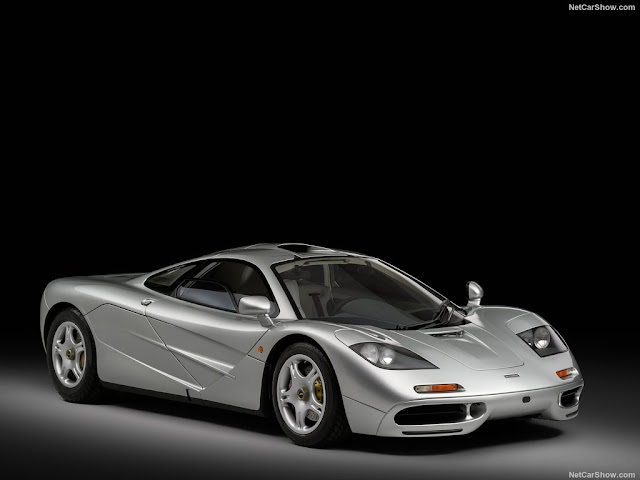As you probably know, the long-awaited Gordon Murray T.50 supercar has been unveiled this week, and there has been a bit of a dispute as to whether the T.50 or the Speedtail is the real McLaren F1 successor. Well, I certainly have my opinions about that, but I'll just cover the facts here, and let you decide for yourself if it is the Speedtail or the T.50.
1. Exterior Deisgn
In terms of exterior design, the photos speak for themselves. The Gordon Murray T.50 is much closer to the original design of the F1, which is to be expected, as they do have the same designer, Professor Gordon Murray. The McLaren carries over a few key styling cues, but is overall very different. The long tail at the rear is obviously taken from the F1 GTR Longtail, however, a feature that the T.50 doesn't have. Below are some pictures, with the McLaren first, the T.50 third, and the F1 in the middle, so you can judge for yourself about the styling.
One obvious difference between the original F1 and both modern interpretations is the lack of any rear view mirrors, as you can see.
Rear styling-wise, neither the Speedtail nor the T.50 have much in common with the F1, although the Speedtail does have the aforementioned longtail design. One of the most distinctive features of the T.50 is the large multi-blade fan at the back, which aids in downforce and overall power, but does not look even remotely like the F1's rear.
The doors are all the same dihedral type found on the F1. No changes here.
As for the top view, the T.50 is most definitely closer to the original design than the Speedtail. The iconic roof scoop is still there, but on the T.50 it feeds the fan. The Speedtail is gorgeous, but a little too modern.
2. Interior Design
There isn't a whole lot to cover here. Both the Speedtail and the T.50 stay true to the F1's seating layout, with the driver's seat all by itself smack-dab in the center of the cab, if I can call it that, and two passenger seats side by side behind that.
3. Engine, Transmission, and Performance
This seems like a lot to cover in just one section, but it's really not. Let's start with the F1. All the world knows that the McLaren F1 had a BMW V12 naturally aspirated (NA) engine which can rev up to 7,500rpm, coupled to a 6-speed manual 'box. The 'standard' car could zip from 0-60mph in just 3.9 seconds, quite a good figure for its time, and accomplished in part thanks to a low weight of just 2,509 pounds, and go on to a top speed of 240.01mph, at least so they say. Now, what about the Speedtail?
The Speedtail uses McLaren's special 4.0L V8 engine, but it is twin-turbocharged, an has assistance from a 312hp electric motor, thus making it a hybrid. The transmission is a 7-speed dual-clutch auto. The official performance specs of the Speedtail are 0-60 in 2.5 seconds, and a top speed of 250mph. Impressive, no doubt, but the car is pretty heavy, weighing in at 3,153 pounds. Good for a hybrid hypercar, but it can't help the handling.
The T.50, on the other hand, stays true to the F1's driver-focused experience. The engine is a 654hp NA Cosworth-developed V12, which can rev all the way up to 12,100rpm. The transmission is an X-Trac 6-speed H-pattern manual unit. Official performance specs have not yet been revealed, but GMA (Gordon Murray Automotive) says they are 'not chasing power or speed figures'. This likely means the T.50 will do 0-60 in around 3.1 seconds, and have a top speed of up to 220mph, judging by the very low weight of just 2,174 pounds.
4. Conclusion
So, which stays truest to the F1's overall formula? The Speedtail or the T.50? Well, like I said, I will let you decide for yourself, but I will give you my opinion. In my opinion, the Speedtail is a beautiful, modern hypercar, worthy of a alot of good names, but 'F1 successor' is not one of them. The T.50, on the other hand, is all you could want in a drivers car, and simply improves on the F1s formula without changing it too much. It is complete with a high-revving V12, a manual transmission, excellent handling, and on top of that is most likely a future classic. That's my idea of a true McLaren F1 successor.





















